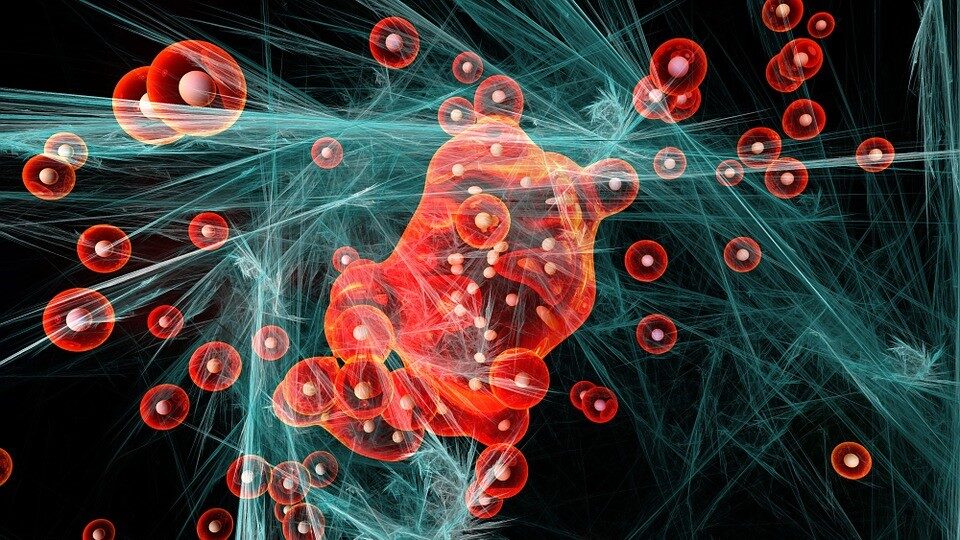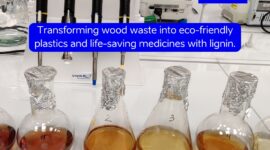Antibiotic resistance is a problem of modern society. The average time for each antibiotic to yield antimicrobial resistance is 10 years.
Due to this, the development of new antibiotic drugs is not economically attractive for pharmaceutical companies and their stewardship optimising therapeutic administrations and preventing infection transmissions has gained important attention[1].
Anna-Liisa Kubo, a PhD student at the National Institute of Chemical Physics and Biophysics and Tallinn University of Technology has studied the antimicrobial effects of metal-based antimicrobial agents (with her supervisors Dr. Anne Kahru and Dr. Olesja Bondarenko from the Laboratory of Environmental Toxicology in the National Institute of Chemical Physics and Biophysics).
Her studies show that one possibility to combat the spread of microbial infections from contaminated surfaces is currently with nanomaterials. “Nanomaterials are defined as any substance with at least one dimension between 1-100 nm. This special feature gives them new properties as compared to their original materials. One of which is a surface area (different from their bulk counterparts) – a characteristic that drives many of their active effects”, she explained and added that nanomaterials have special physico-chemical properties which are dependent on their material chemistry, shape, surface charge, and their ability to dissolve or form aggregates in suspensions.
Pros and cons of silver
“Historically, bulk, dissolved or colloidal silver has been extensively used as a disinfectant due to its antimicrobial properties. The main mechanism in antimicrobial effects of metallic silver is its ability to dissolve in the presence of oxygen and water and release highly antimicrobial silver-ions into the environment”, Kubo mentioned. “Silver ions, in turn, have high affinity towards sulphur and they tend to bind to organic ligands, such as proteins and humic compounds. Similarly to all nanoparticles, nanosilver also has the tendency to agglomerate. For that, metallic (e.g. silver) nanoparticles are often coated with special polymers to stabilise them. In the case of silver, coating can also modulate its release of Ag-ions.”
As one part of her PhD project, Kubo studied the antimicrobial effects of differently sized and coated spherical silver nanoparticles[2]. “We investigated a panel of silver nanoparticles coated with organic chemicals, some of which possessed disinfectant properties themselves. What was interesting about the materials studied was that after applying these coatings on the surfaces of nanoparticles, the surface charge was changed. The change, however, can play a pivotal role in the antimicrobial effect of silver nanoparticles as the surface of microbes has a negative charge. Thus, positively charged silver nanoparticles might possibly result in stronger antimicrobial effects due to the attraction to each other from opposite charges.”
Bacteria may change the situation
“The antimicrobial potency of these nanomaterials was studied in distilled water – the test environment that cannot interfere with the speciation of released silver ions or nanoparticle’s surface chemistry. As shown earlier in our laboratory by Suppi et al[3], the use of distilled water as a testing environment allows to see the naive and prompt toxic effects of metal-based nanomaterials (whereas that is not possible when the test environment contains a lot of organic ligands and micronutrients)”, she explained.
“But we also have to look on the surface of bacteria themselves as bacteria are robustly divided into two broad groups: Gram-negative and Gram-positive bacteria with different properties of their cell envelope. To study the antimicrobial effects, Kubo and her colleagues used Gram- negative Escherichia coli and Gram-positive Staphylococcus aureus.”
The study made by Kubo et al on antimicrobial properties of differently coated silver nanoparticles and published in peer reviewed and highly quoted journal Colloids and Surfaces B: Biointerfaces[4] showed that, firstly, Gram-negative Escherichia coli were more susceptible to silver nanoparticles as compared to Gram-positive Staphylococcus aureus; secondly, the toxicity of nanosilver was time-dependent, and thirdly, the positively charged silver nanoparticles were binding on bacterial surfaces. Most importantly, the toxicity of silver nanoparticles was mainly due to the released silver ions. As smaller particles dissolve more than bigger ones, the smaller particles were more toxic.
These properties, however, can pave a path to many applications of these particular silver nanoparticles e.g. in the biomedical industry. One possibility is to use silver nanoparticles as coating materials themselves for interior high-touch surfaces in hospitals where vulnerable patients are in proximity of extensive invasive procedures. Related research is explored within the scope of an international Anti-Microbial Coating Innovations project to prevent infectious diseases (AMICI)[5] .
Written by Marii Kangur
This article was funded by the European Regional Development Fund through Estonian Research Council.
[1] Ventola, C. L. (2015). The antibiotic resistance crisis: part 2: management strategies and new agents. P & T : A Peer-Reviewed Journal for Formulary Management, 40(5), 344–352.
[2] Kubo, Anna-Liisa; Capjak, Ivona; VinkovićVrček, Ivana; Bondarenko, Olesja, M.; Kurvet, Imbi; Vija, Heiki; Ivask, Angela; Kasemets, Kaja; Kahru, Anne (2018). Antimicrobial potency of differently coated 10 and 50 nm silver nanoparticles against clinically relevant bacteria Escherichia coli and Staphylococcus aureus. Colloids and Surfaces B: Biointerfaces, 170, 401−410.10.1016/j.colsurfb.2018.06.027. https://doi.org/10.1016/j.colsurfb.2018.06.027
[3] Suppi, S., Kasemets, K., Ivask, A., Künnis-Beres, K., Sihtmäe, M., Kurvet, I., Aruoja, V., and Kahru, A. (2015) A novel method for comparison of biocidal properties of nanomaterials to bacteria, yeasts and algae, Journal of Hazardous Materials 286, 75-84.
[4] The work on antimicrobial potency of silver nanoparticles was done in collaboration with Croatian Institute for Medical Research and Occupational Health and Croatian Institute of Transfusion Medicine, dr. Ivana Vinkovic-Vrcek.
[5] http://www.cost.eu/COST_Actions/ca/CA15114
 Back
Back



